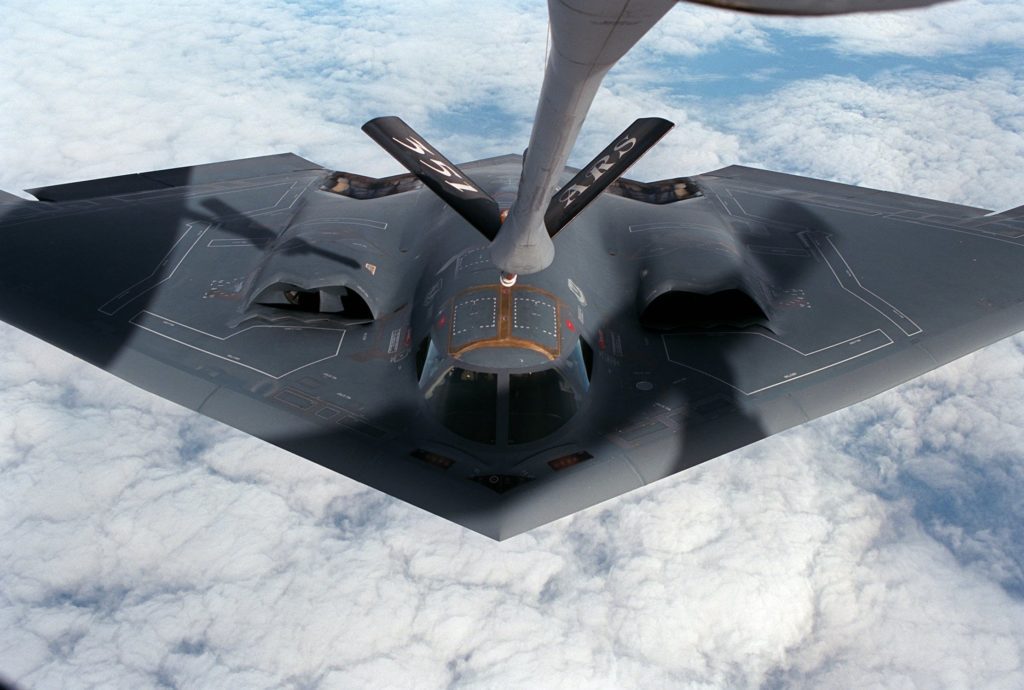
An Air Force’s primary role is to take complete control of the skies from an enemy force and deny them access. This requires a multitude of assets ranging from precise coordination with ground personnel, meticulous pre-planning with the other branches, a plethora of aircraft designed to fill specific roles and—especially at Hill Air Force Base—astute maintenance personnel who prepare the aircraft before and after every mission.
For the United States Air Force, there are a variety of different aircraft formulated to contribute to the success of missions. These aircraft are historically designed for special roles such as surveying enemy targets, offering ground troop support, deploying in long-range bombing missions or even electronic warfare! What’s the difference between these many types? It’s all encoded in the title.
F Is for Fighter
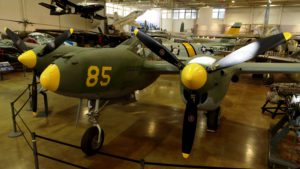 Let’s start off with the most iconic aircraft, the fighter, primarily concerned with enemy interdiction and air superiority. These aircraft fall under the F designation, for, you guessed it, Fighter. In the Second World War they were labeled as P, including the P-51 Mustang or P-38 Lightning, meaning Pursuit. The F designation refers to any aircraft whose primary function is the engagement of enemy air assets, thus the term “air superiority.” Primary design characteristics include speed, maneuverability, acceleration and survivability. Hill Air Force Base has historically been a key place for maintaining several of these aircraft and is currently the home of the F-35 Demo Team.
Let’s start off with the most iconic aircraft, the fighter, primarily concerned with enemy interdiction and air superiority. These aircraft fall under the F designation, for, you guessed it, Fighter. In the Second World War they were labeled as P, including the P-51 Mustang or P-38 Lightning, meaning Pursuit. The F designation refers to any aircraft whose primary function is the engagement of enemy air assets, thus the term “air superiority.” Primary design characteristics include speed, maneuverability, acceleration and survivability. Hill Air Force Base has historically been a key place for maintaining several of these aircraft and is currently the home of the F-35 Demo Team.
One Fighter that flies nearly “undetected” in this category is the F-117 Nighthawk. While the F may indicate Fighter status, this aircraft is equipped with bomb ordnances, deviating from the typical Fighter technology. Additionally, this “stealth fighter” was designed and used to slip through enemy defenses and drop precision munitions on enemy targets and escape without ever being seen. Hill Air Force Base’s Ogden Air Logistics Center was tasked with the maintenance of this aircraft in late 1998 through the 649th Combat Logistics Support Squadron and they performed this mission through 2008 when the F-117 was retired from service.
A Is for Attack
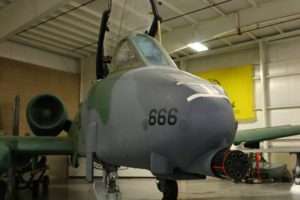 Another well-known air designation stands for Attack, such as the A-10 Warthog. These aircraft have been specifically tasked with providing direct support to ground personnel and taking the fight to ground assets. Primary design characteristics include low speed that allows for extended loitering at the battlefield, extensive armament and heavy armoring to protect against enemy fire. A-10 aircraft come to Hill Air Force Base for depot maintenance when they need to be refurbished or freshened up. The base is also home to the A-10 system program office, which manages the A-10 weapon system from cradle to grave.
Another well-known air designation stands for Attack, such as the A-10 Warthog. These aircraft have been specifically tasked with providing direct support to ground personnel and taking the fight to ground assets. Primary design characteristics include low speed that allows for extended loitering at the battlefield, extensive armament and heavy armoring to protect against enemy fire. A-10 aircraft come to Hill Air Force Base for depot maintenance when they need to be refurbished or freshened up. The base is also home to the A-10 system program office, which manages the A-10 weapon system from cradle to grave.
B Is for Bomber
Bomber aircraft is designed for air-to-ground combat with two major classifications: strategic and tactical. In WWII, bombers tended to be tailored for specific roles because of a desire for accuracy. Namely, the B-17 Flying Fortress, B-24 Liberator and B-29 Superfortress are all strategic bombers that have a significant tie to Hill and Utah Aviation. Throughout WWII, Hill performed maintenance on the B-17 and B-24 specifically to ensure these aircraft were able to perform their assigned missions. Pilots and crews of the B-29 Superfortress trained at Wendover Field in part of what is now the Utah Test and Training Range.
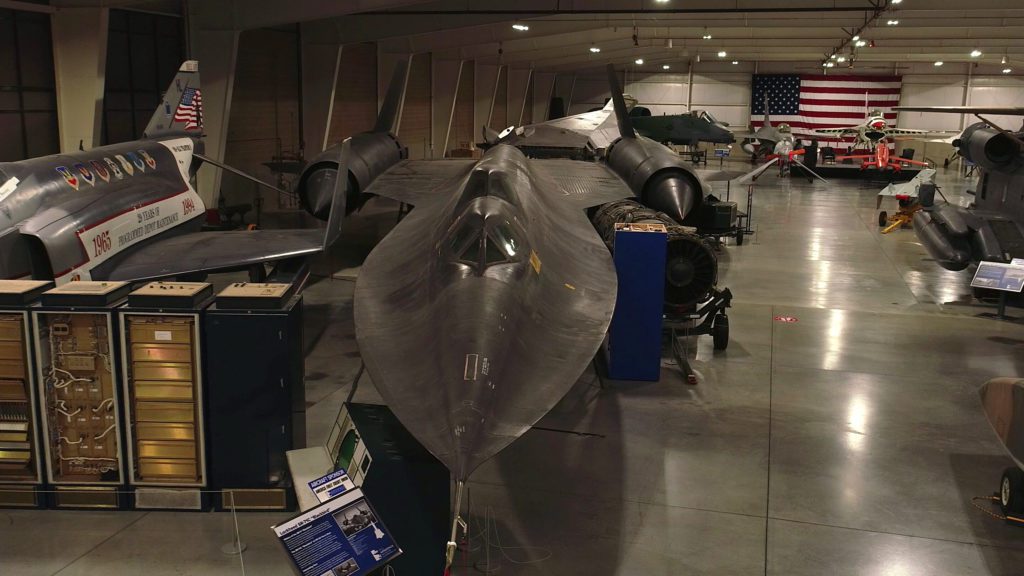
S and R Stand for Surveillance Reconnaissance
Knowing what your enemy is doing is just as important as responding, and thus the necessity for reconnaissance is vital. The most famous reconnaissance vehicles, the SR-71 Blackbird and U-2, nicknamed Dragon Lady, exemplify the two prevailing examples of reconnaissance aircraft before the age of the spy satellite. Besides taking lots of high-quality photography, a reconnaissance aircraft is required to fly very, very high or very, very fast in order to evade enemy interdiction. The SR-71 flies so high it is technically a spacecraft, skimming the edge of the upper atmosphere at some 80,000 feet. Meanwhile, it moves so fast that missiles and enemy aircraft weren’t ever able to keep up, reaching speeds of 2,200 mph! While only one of the U-2 Dragon Lady’s many “utility” purposes was for reconnaissance, its photo equipment, along with that of the SR-71, was repaired and refurbished by maintenance crews at Hill Air Force Base for many years.
C Is for Cargo
Transportation is vital to the success of many military missions whether that be transportation of personnel or supplies. Cargo aircraft like the C-130 Hercules, C-124 Globemaster and C-5 Galaxy have provided logistical support to a variety of missions. One C-124 can transport 200 troops at a time, as well as tanks, trucks and other heavy equipment. One C-130 can take off with a weight of 155,000 lbs. Hill Air Force Base does depot overhaul on the Navy’s C-130, as well as repairing and refurbishing the landing gear on the C-130 and on the C-5, one of the largest military aircraft in the world.
K Is for Kerosene Tanker
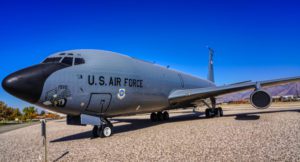 These aircraft are equipped to refuel other aircraft while in-flight. This allows for extended flight time and range. This method was implemented more and more following WWII to assist strategic bombers extend their flight range. During Vietnam, aerial refueling helped Fighters like the F-4 Phantom fly longer and carry more weapons. Here in Utah, the Utah Air National Guard’s 151st Air Refueling Wing flies support of air refueling operations, aeromedical evacuation and cargo missions like the KC-135 Stratotanker.
These aircraft are equipped to refuel other aircraft while in-flight. This allows for extended flight time and range. This method was implemented more and more following WWII to assist strategic bombers extend their flight range. During Vietnam, aerial refueling helped Fighters like the F-4 Phantom fly longer and carry more weapons. Here in Utah, the Utah Air National Guard’s 151st Air Refueling Wing flies support of air refueling operations, aeromedical evacuation and cargo missions like the KC-135 Stratotanker.
Q Is for Drone
Drones, or Unmanned Aerial Vehicles (UAVs), are defined as aircraft controlled from a point outside of the aircraft itself. These have become instrumental in 21st century warfare as an aid in counterterrorism operations. The MQ-1 Predator was important to both the United States Air Force and the Central Intelligence Agency (CIA) in Afghanistan and Pakistan from 2001 to 2008 when it was replaced by the MQ-9 Reaper. The United States Army and Air Force both use the Utah Test and Training Range to test drones and prepare for missions abroad.
E Is for Electronic
Special Electronic Installation, one of the newest designations created by the Department of Defense, describes an aircraft modified with electronic devices designed to disrupt the effectiveness of enemy radar and radio systems by using radar jamming methods. These can also provide tactical data for unmanned vehicles and relay important communication from one point to another. One early variation of this concept was the EF-111A Raven, based off the F-111 Aardvark, a supersonic, penetrating, electronic-jamming aircraft.
T Is for Trainer
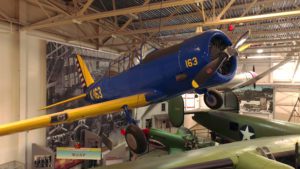 Trainer Aircraft are an important part of the Air Force’s mission as they provide a way to train personnel on aircraft while providing special provisions for instructors. Aircraft like the AT-6A Texan, BT-13 Valiant and PT-17A Kaydet were all vital to the United States Army Air Forces for training pilots in different phases during World War II. The AT-6 Texan allowed the student and instructor to sit in tandem, while the BT-13 Valiant required student pilots to use two-way radio communication with their instructor on the ground. Hill Air Force Base maintained and overhauled the engine on the Valiant, performed repairs and modifications on the AT-6 and stored many of the PT-17A Kaydets after training facilities closed at the end of World War II.
Trainer Aircraft are an important part of the Air Force’s mission as they provide a way to train personnel on aircraft while providing special provisions for instructors. Aircraft like the AT-6A Texan, BT-13 Valiant and PT-17A Kaydet were all vital to the United States Army Air Forces for training pilots in different phases during World War II. The AT-6 Texan allowed the student and instructor to sit in tandem, while the BT-13 Valiant required student pilots to use two-way radio communication with their instructor on the ground. Hill Air Force Base maintained and overhauled the engine on the Valiant, performed repairs and modifications on the AT-6 and stored many of the PT-17A Kaydets after training facilities closed at the end of World War II.
By utilizing the full range of aircraft, and through the dedicated efforts of ground crews, the United States Air Force can perform all of their diverse tasks to keep our forces safe. To see these, and many other incredible aircraft, visit Hill Aerospace Museum today, where admission is always free.
